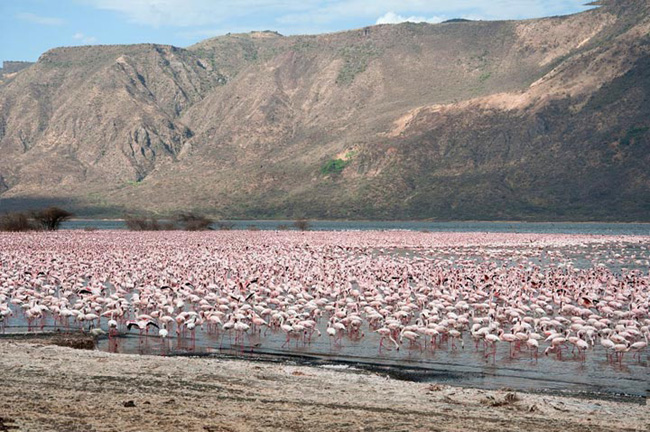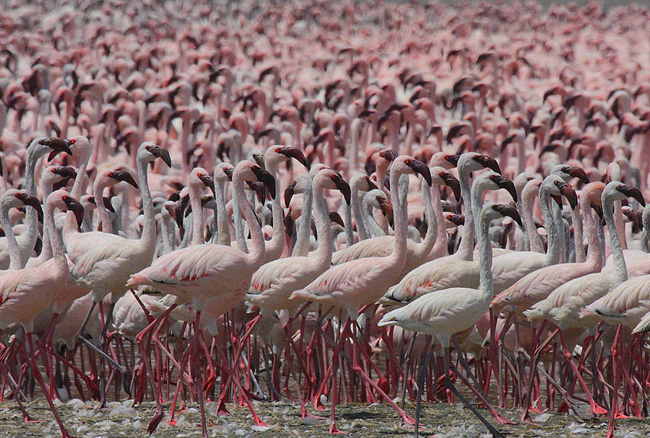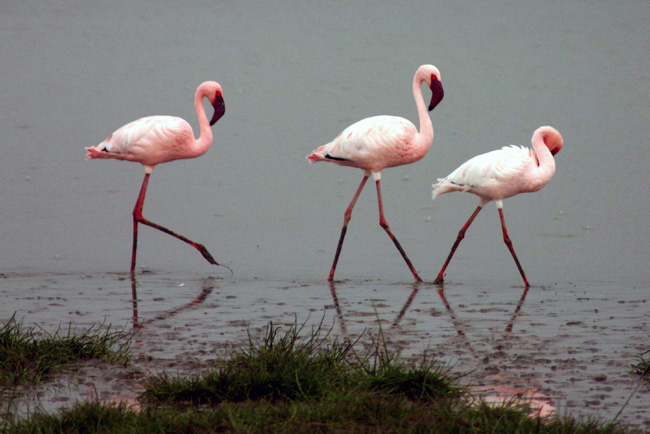Lake Bogoria is one of the hyper saline lakes in the Rift Valley region, and lies between the more popular Lake Nakuru and Lake Baringo. Although mostly overlooked in short span itineraries due to its challenged presence of wildlife in comparison to her rivals, Lake Bogoria offers something unique and breathtaking. The geysers and hot water springs unique to the banks and shores of these Lake undoubtedly give it an edge as doesits ability to offer solitude and exclusivity to those pursuing the same. The locals believe in the healing and medicinal powers of the geysers, while visitors have a good time viewing the lesser flamingoes, spotting giant kudus or simply taking a drive around Lake Bogoria Conservancy. Here are a few tips from Jovago.com on how to explore another of Kenya’s magical destinations.
Jovago’s Top 3
Geysers and Hot Water Springs
Image by http://www.wondermondo.com/
Lake Bogoria is said to be the best location to watch geysers and hot springs in Africa. The springs normally have a high content of CO2, which explains the wild boiling in the shallow streams and gulleys formed. The springs which can shot up to 5meters high have also been tapped for geothermal power in the western banks of the lake, thus making them an important economic feature of this 10m deep lake. In total Lake Bogoria is said to have approximately 200 hot springs; larger and more pronounced springs grouped into fours make a geyser.
The Lesser Flamingo
image by http://bit.ly/1k6k81H
Lake Bogoria holds the highest density of these birds worldwide; with numbers rising up to 2 million in some seasons, at times rendering flight impossible due to the massing. The main attraction for this beautiful aviary species is the unique proliferation of the Arthrospirafusiformis, a species of algae that makes the basis of the birds’ nutritional supply. The most amazing fact of this awe-inspiring pink plumage, is that they are migratory to the core and breed across the border along Lake Natron in Tanganyika. Maybe a lesson to the East Africa Community? For more bird species, take a drive to the Kesubo swamp in the northern end of the lake. The location is said to hold the highest number of bird species spotted in an hour globally.
Explore the northern Hemisphere!
image by http://bit.ly/1ZEV42m
If a picture and a good caption speaks your language, this will make a good bet! While there’s no sudden change of temperature, UFOs or unusual creatures crawling the dusty paths; the many colorful signs will ultimately let you know when you set foot in the Northern Hemisphere. Stop by, take a few clicks and make it to the list of mortals who have vacationed in both halves of mother earth.
Fun Facts
As pretty as it is, this pink bird can fly to a speed of 35 miles per hour, and derives its name from latin’s flamma which translates to a flame.
TIPS
How to Get There
Unless you plan to fly on chartered air craft, driving to Lake Bogoria (from Nairobi) would be the easiest and fastest. This will take about 4.5 hours via Nakuru. You can also opt for a bus ride, mostly comfortable coaches or minibuses picked from downtown Nairobi.
Shopping
If looking for souvenirs, you can be sure to be lost for choice amidst scores of retailers along the route. For more personal stuff and other kinds of gifts, make a stop in Nakuru town and fill your baskets!
Hotels
Whether on a tight budget or in a mood to splurge; you can chose any of the hotels on Jovago-Lake Bogoria-Hotels or even opt for camping in the wild!
Safety Precautions: There is no pronounced crime rate in the region, but like common sense dictates; always be on the lookout for anything fishy. Lake Bogoria has no known fish life!





